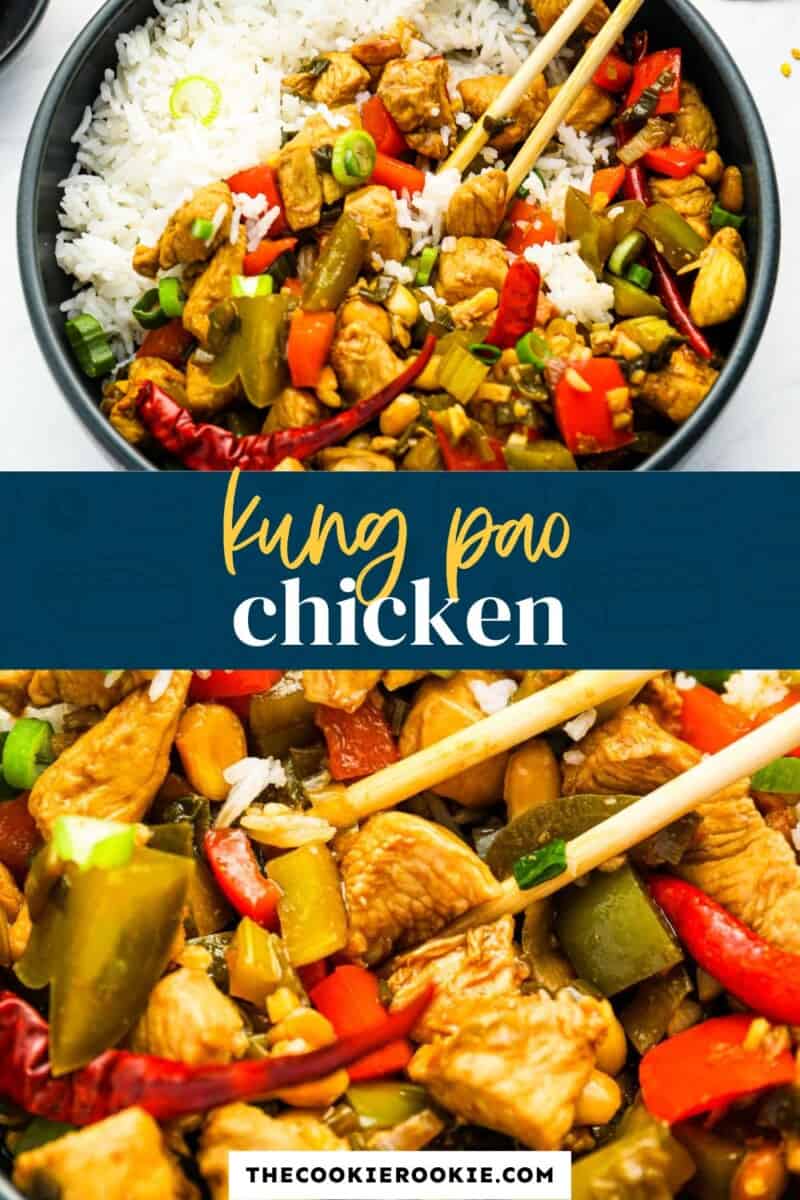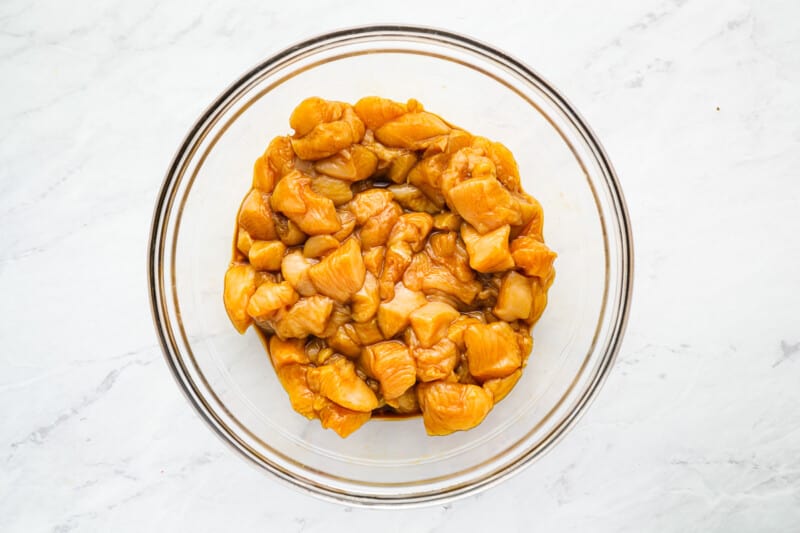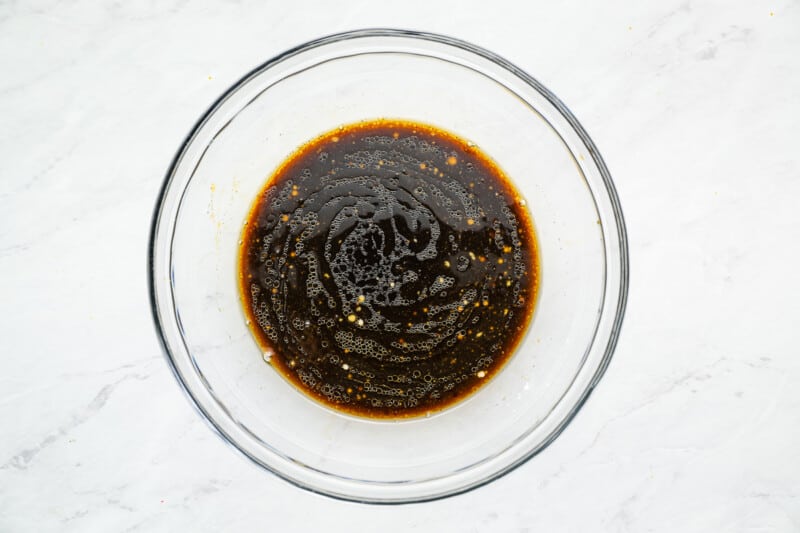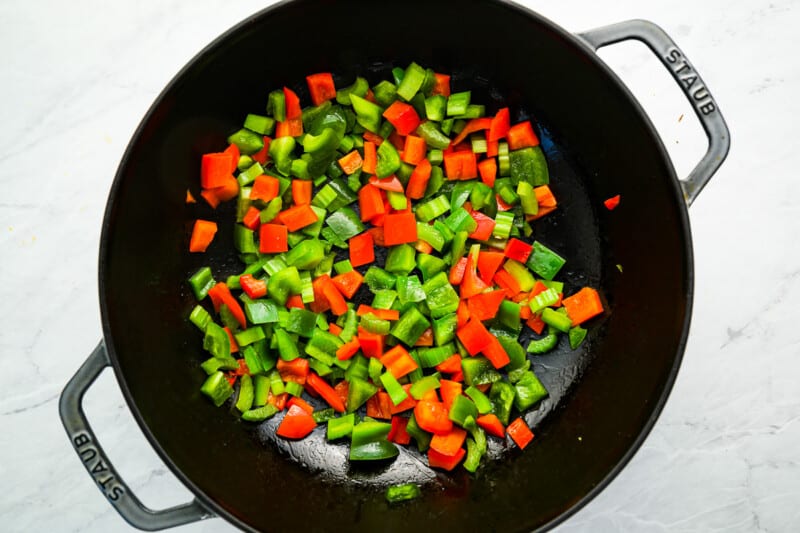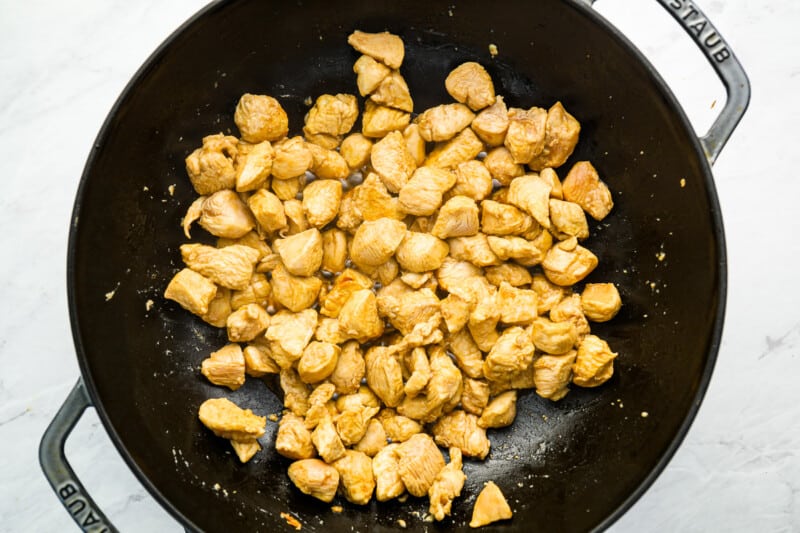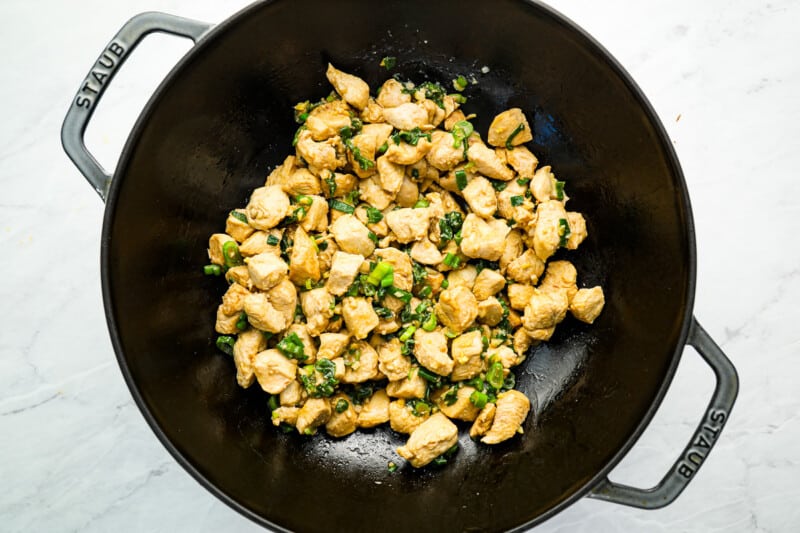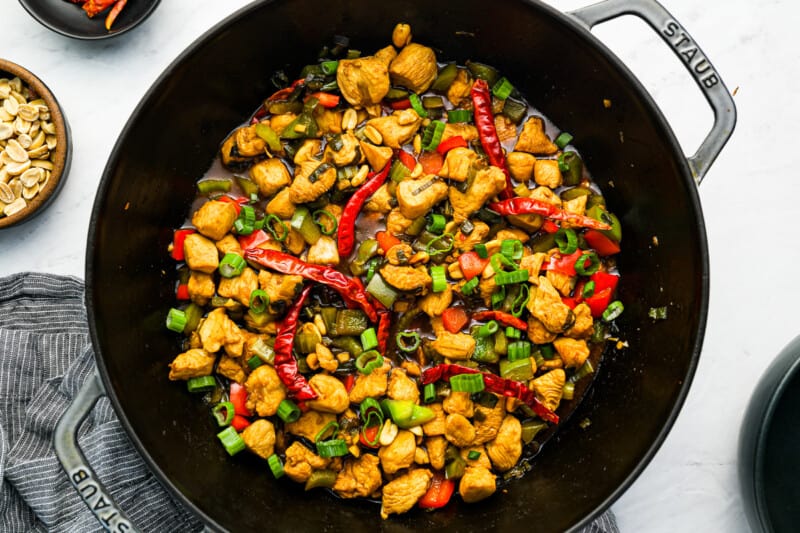This easy Kung Pao Chicken recipe is deliciously spicy and cooks in 15 minutes! Marinated cubes of juicy chicken are cooked up in a stir fry with lots of colorful veggies, peanuts, chilies, and the most amazing Kung Pao sauce.
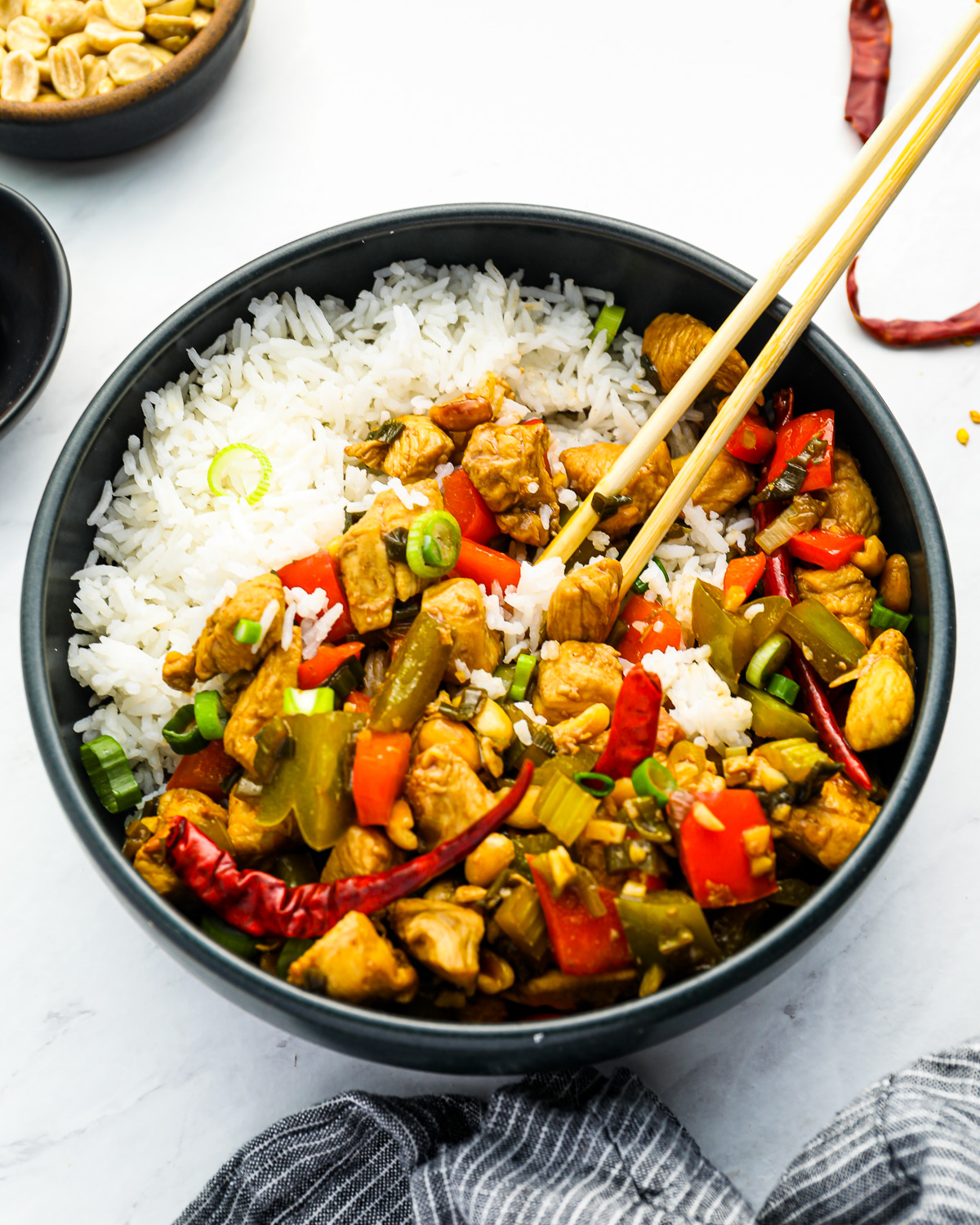
What’s in this Kung Pao Chicken Recipe?
Make this Chinese takeout favorite from the comfort of your own home with just a few fun and unique ingredients and many pantry staples.
- Chicken: I prefer to use boneless, skinless chicken breasts, but you can also use thighs.
- Shaoxing Wine: Also known as “yellow wine”, it has a sweet and dry flavor that compliments the chicken and the sauce. Sherry vinegar makes a good substitute in a pinch.
- Soy Sauce: Adds a salty and umami element to the marinade and the sauce.
- Cornstarch: Helps thicken the marinade and the kung pao sauce.
- Chicken Broth: Forms the base of the sauce, adding a rich and savory flavor.
- Black Vinegar: An aged vinegar with a deep malty flavor that adds complexity to the dish. Balsamic vinegar makes a good substitute if you’re unable to find it.
- Granulated Sugar: Adds a touch of sweetness to the sauce.
- Hoisin Sauce: Adds a salty and sweet element.
- Sesame Oil: Adds a bit of a nutty flavor to the sauce.
- Vegetable Oil: Helps the chicken and vegetables cook without burning.
- Bell Peppers: Add an earthy and vegetal flavor and crunch to the dish.
- Celery: Adds a mild herbal flavor and crunch.
- Garlic + Ginger: Classic Asian seasonings that enhance the overall flavor of the dish.
- Scallions: Add a pop of color and freshness.
- Chinese Chilies: Make this dish pleasantly spicy. You can use arbol chilies if you’re unable to find Chinese chilies.
- Unsalted Peanuts: Add a delightful crunch and nutty flavor to the dish.
Pro Tip: You can find Shaoxing wine, black vinegar, and Chinese chilies at most Asian grocery stores.
Variations on Chinese Kung Pao Chicken
This kung pao sauce and marinade pairs well with a wide variety of proteins, like tofu, shrimp, flank steak, or mushrooms. Try swapping out the peanuts for cashews for a milder flavor; add chunks of pineapples for a sweet and tangy variation; or add some creamy peanut butter to the sauce for a creamier texture and a more peanut-forward flavor.
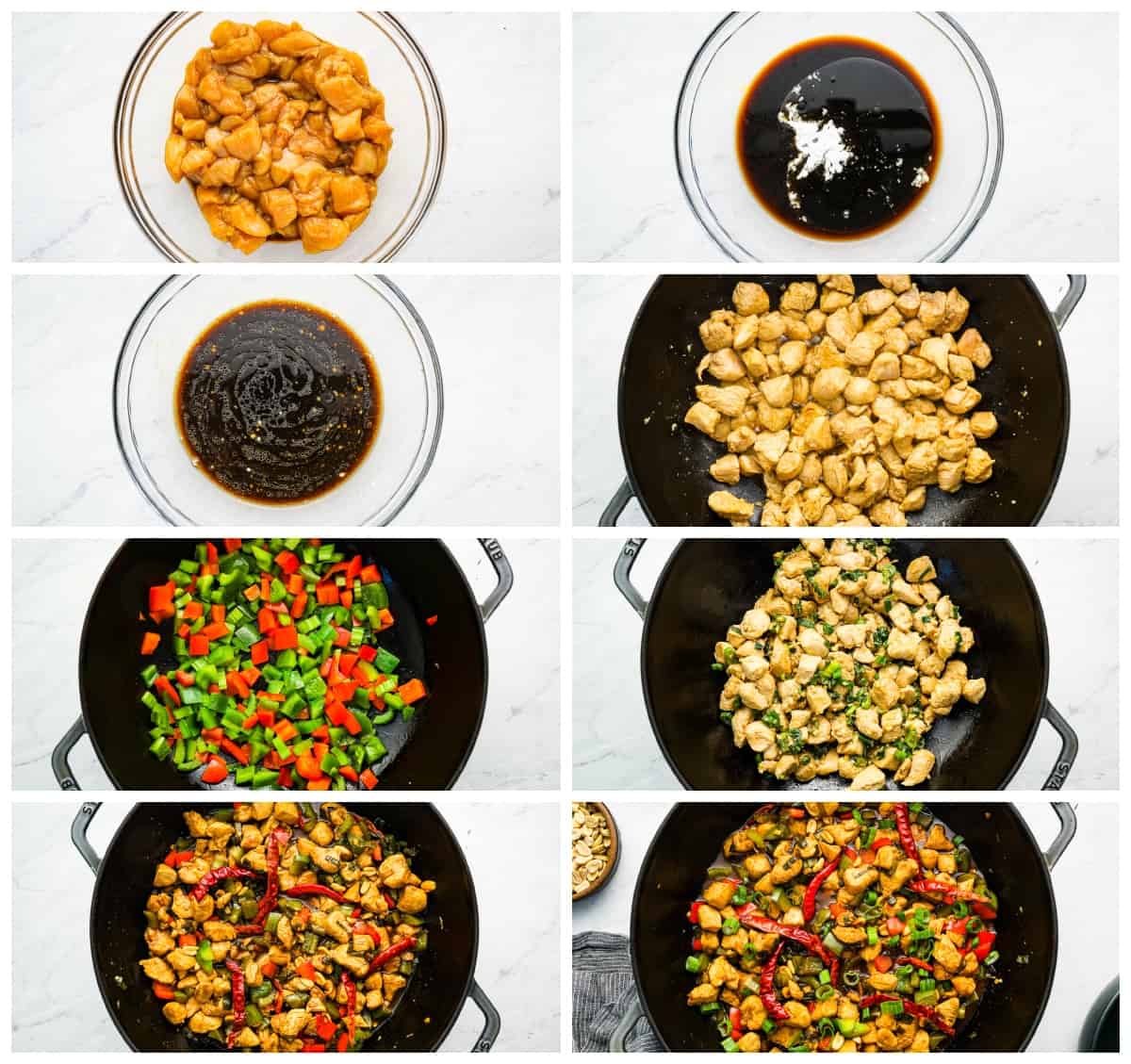
This dish is a spicy stir fry made from cubed chicken, peanuts, vegetables, and chili peppers.
While the two dishes are similar, Szechuan chicken is much spicier!
It is savory and sweet with a spicy kick and a bit of nuttiness from the peanuts.
It is spicy, but not overbearingly so. If you’re sensitive to spice, you can reduce or omit the Chinese chilis.
Kung pao chicken is hot and spicy, whereas general tso is sweet and slightly spicy.
This dish is a great source of protein, potassium, vitamin A, and vitamin C. However, it is also high in saturated fat, cholesterol, and sodium, so enjoy it in moderation as part of a balanced diet.
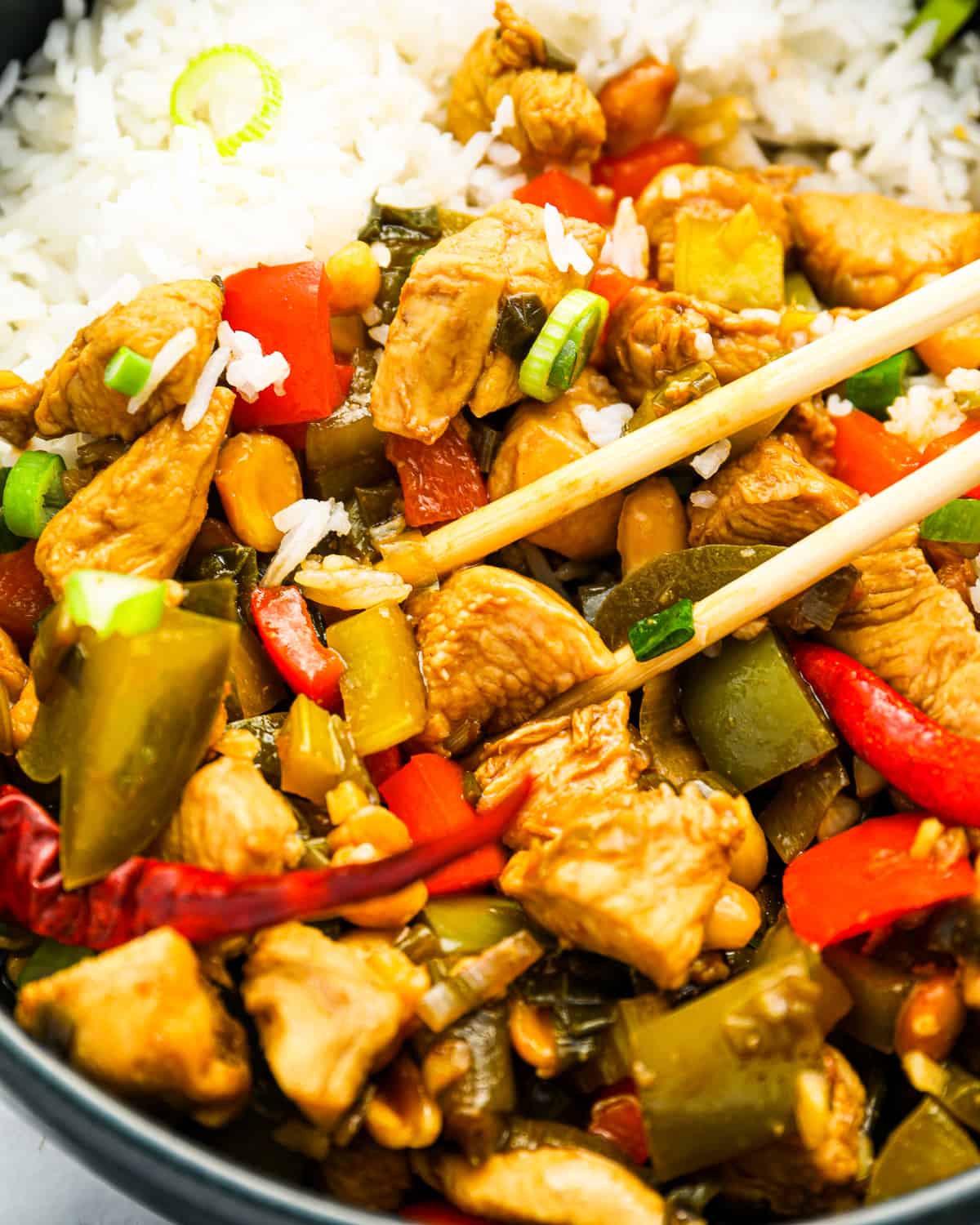
How to Store and Reheat
Store leftover kung pao chicken in an airtight container in the refrigerator for up to 3 days. Reheat in a saucepan set over medium-low heat or in the microwave in 30-second increments until warmed through.
How to Freeze
Freeze leftovers in an airtight container or Ziplock bag for up to 3 months. Let thaw overnight in the refrigerator before reheating.
Serving Suggestions
Serve this sweet and spicy kung pao chicken recipe with basmati rice, ham fried rice, or vegetable lo mein. Start with a warming bowl of egg drop soup, some crab rangoon, or an egg roll for the true takeout-at-home experience.
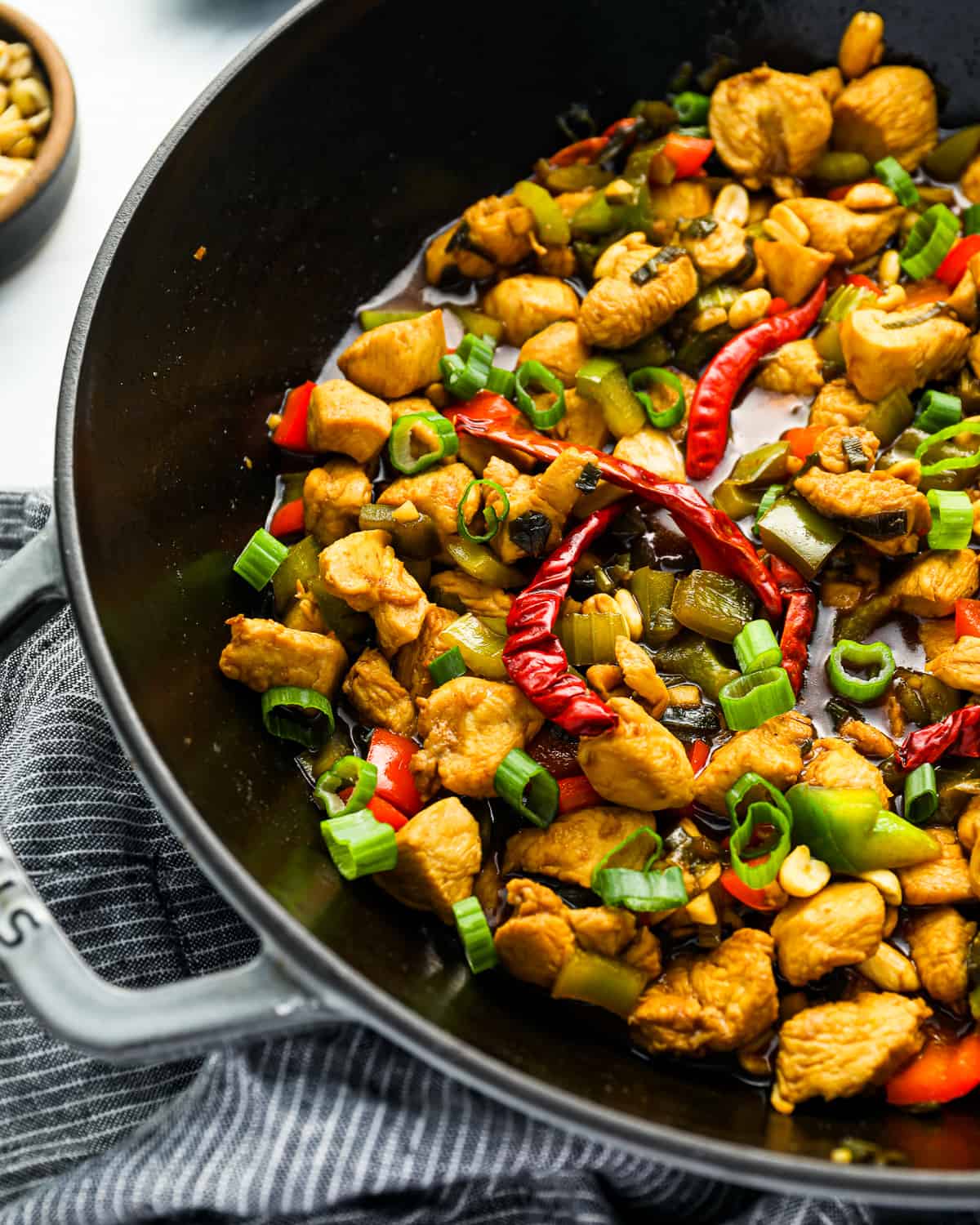
Kung Pao Chicken Recipe

Ingredients
For the Chicken
- 1½ pounds boneless, skinless chicken breasts cut into bite-sized pieces
- 1 tablespoon Shaoxing wine
- 1 tablespoon low-sodium soy sauce
- 1 teaspoon cornstarch
For the Sauce
- ⅓ cup low-sodium chicken broth
- 2 tablespoons soy sauce
- 2 tablespoons black vinegar
- 2 tablespoon Shaoxing wine
- 1½ tablespoons granulated sugar
- 1 tablespoon hoisin sauce
- 1 tablespoon toasted sesame oil
- 1 teaspoon cornstarch
For the Stir Fry
- 2½ tablespoons vegetable oil divided
- 1 red bell pepper diced
- 1 green bell pepper diced
- 2 ribs celery diced
- 3 cloves garlic chopped
- 2 teaspoons minced fresh ginger
- 5 scallions sliced
- 8 dried Chinese chilies
- ⅓ cup roasted unsalted peanuts
Instructions
- In a medium bowl, whisk the Shaoxing wine, soy sauce, and cornstarch together until combined. Add in the chicken and toss to coat. Let marinate for 10-15 minutes.1½ pounds boneless, skinless chicken breasts, 1 tablespoon Shaoxing wine, 1 tablespoon low-sodium soy sauce, 1 teaspoon cornstarch
- In a medium bowl or liquid measure, whisk all the sauce ingredients together until combined.⅓ cup low-sodium chicken broth, 2 tablespoons soy sauce, 2 tablespoons black vinegar, 2 tablespoon Shaoxing wine, 1½ tablespoons granulated sugar, 1 tablespoon hoisin sauce, 1 tablespoon toasted sesame oil, 1 teaspoon cornstarch
- Heat a large nonstick skillet, or wok, over medium-high heat. Add 1 tablespoon of oil. Once hot, add in the bell peppers, celery. Cook, stirring often until just tender, 4-5 minutes. Remove from the pan and set aside.2½ tablespoons vegetable oil, 1 red bell pepper, 1 green bell pepper, 2 ribs celery
- Add in another tablespoon of oil. Once hot, add in the chicken, cooking in batches to avoid crowding the pan if needed. Cook the chicken, stirring often, until browned, 3-4 minutes.
- If cooked in batches, add any additional chicken back into the pan. Add the remaining ½ tablespoon oil, garlic, ginger, scallions, and dried chilies. Cook for 60 seconds until fragrant.3 cloves garlic, 2 teaspoons minced fresh ginger, 5 scallions, 8 dried Chinese chilies
- Add the vegetables and sauce into the pan. Bring the sauce to a simmer and cook until thickened, 1-2 minutes. Add on the peanuts and stir to combine.⅓ cup roasted unsalted peanuts
Becky’s Tips
- Shaoxing wine, black vinegar, and dried Chinese chilies can be purchased at your local Asian market.
- If desired, sherry vinegar can be used to replace the Shaoxing wine.
- If desired, balsamic vinegar can be used to replace the black vinegar wine.
- If desired, arbol chilis can be used to replace the Chinese chilies.
Nutrition information is automatically calculated, so should only be used as an approximation.
